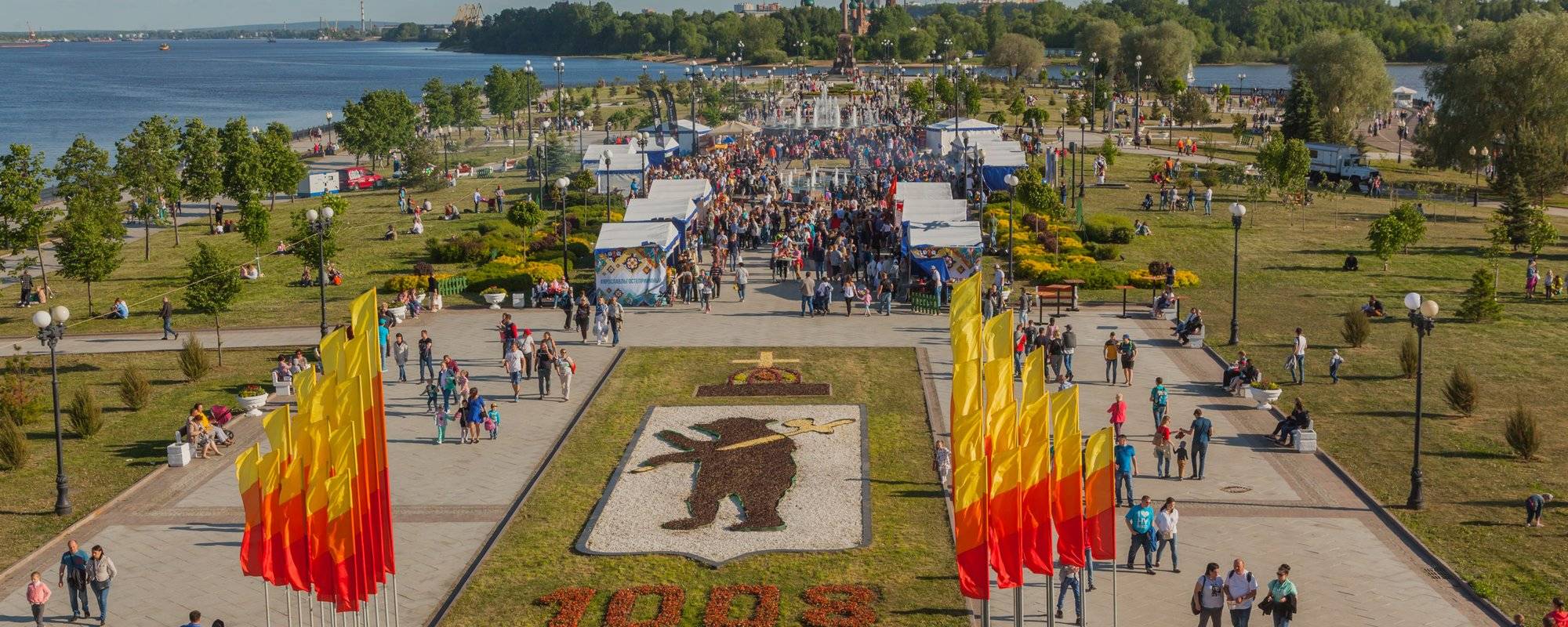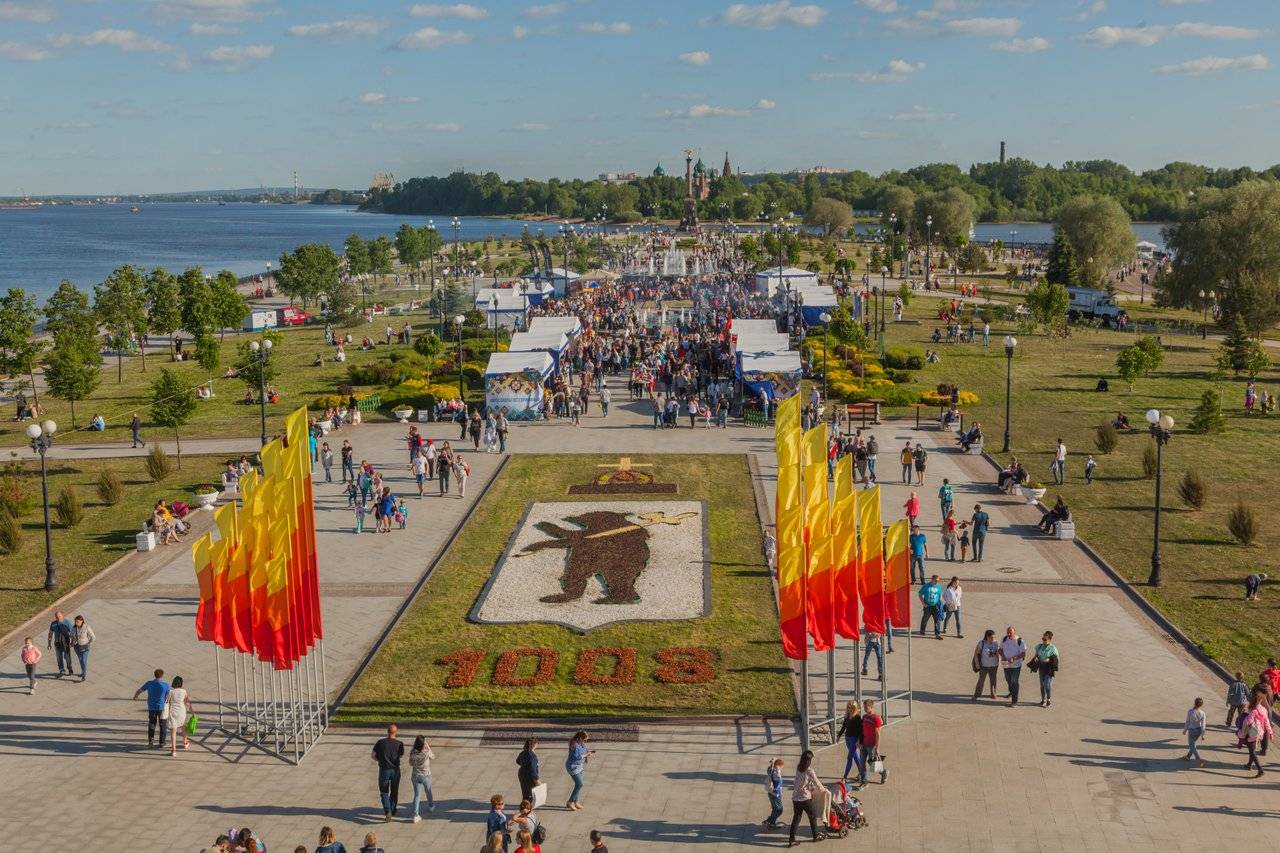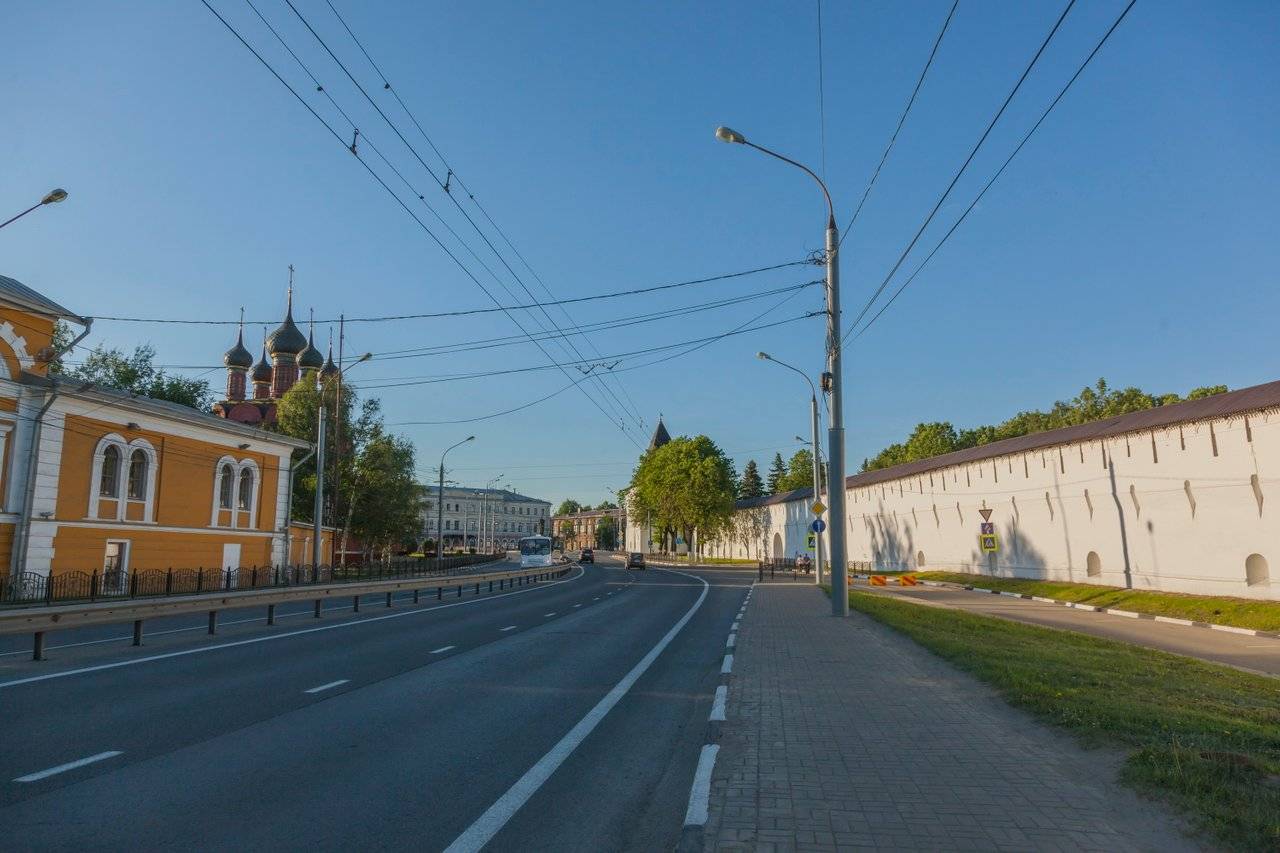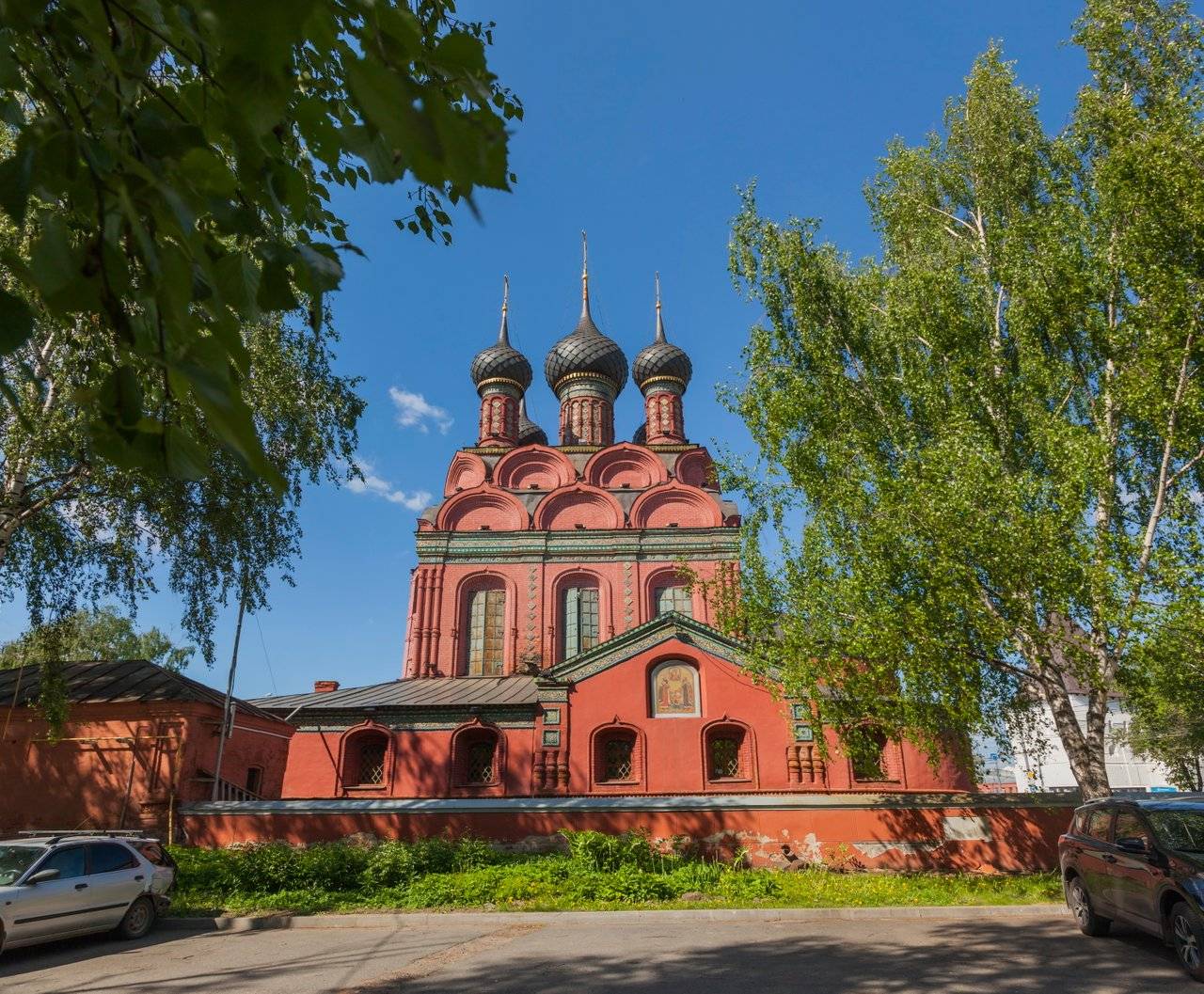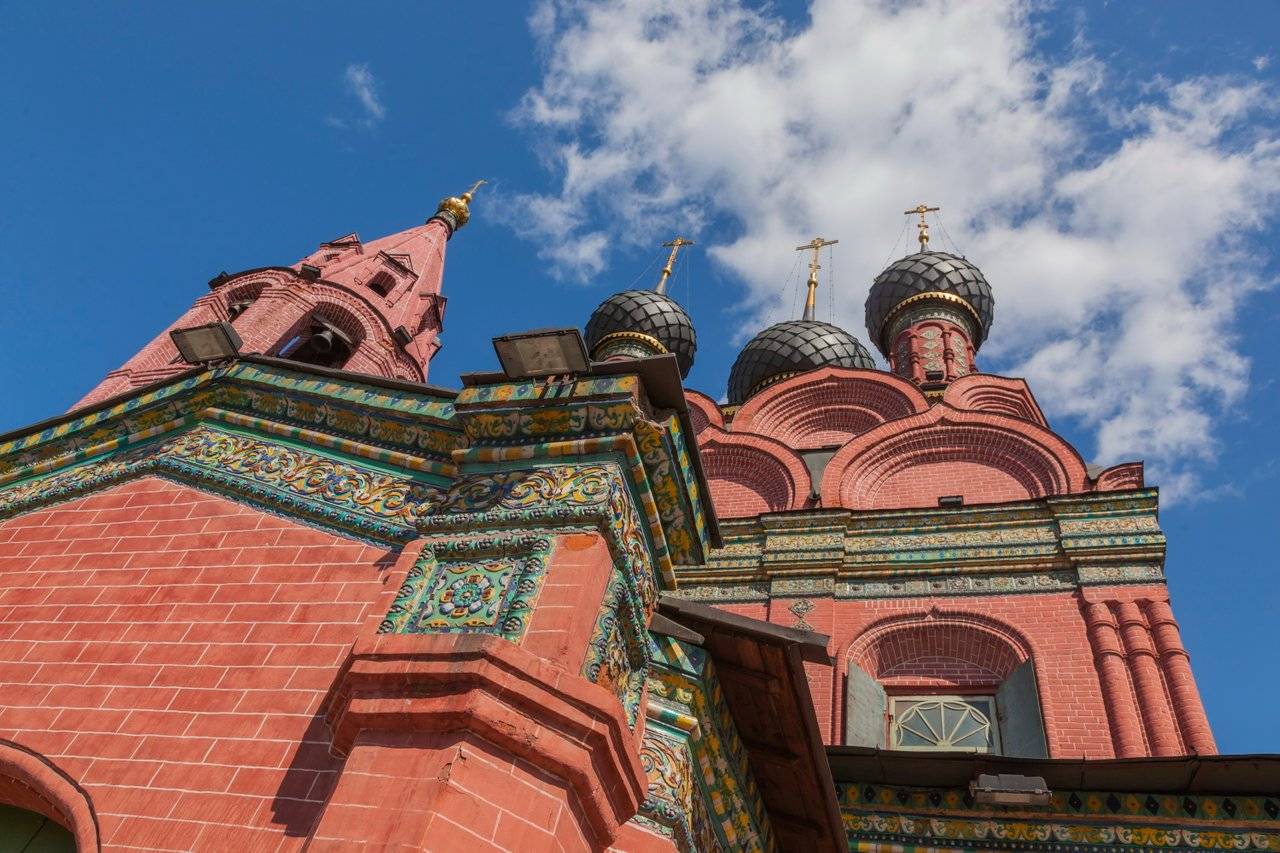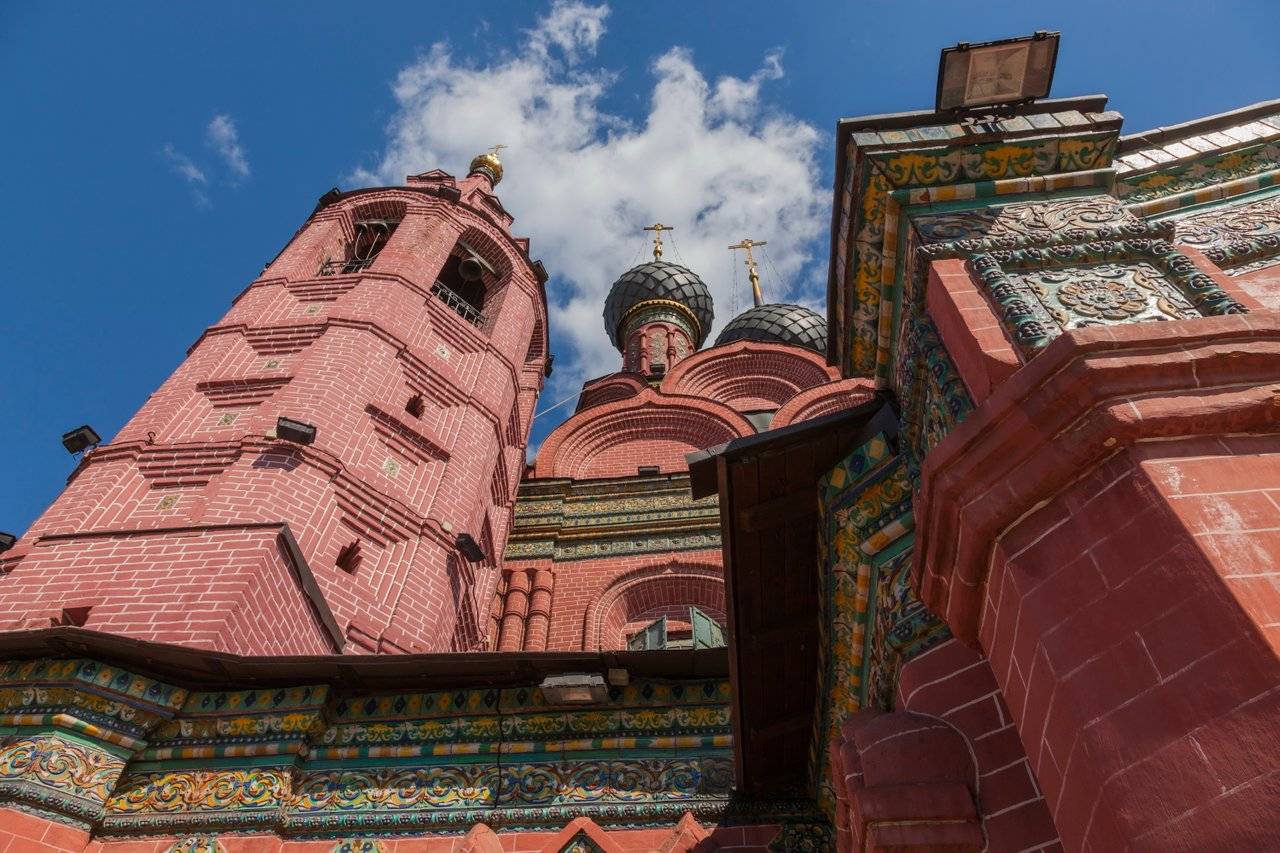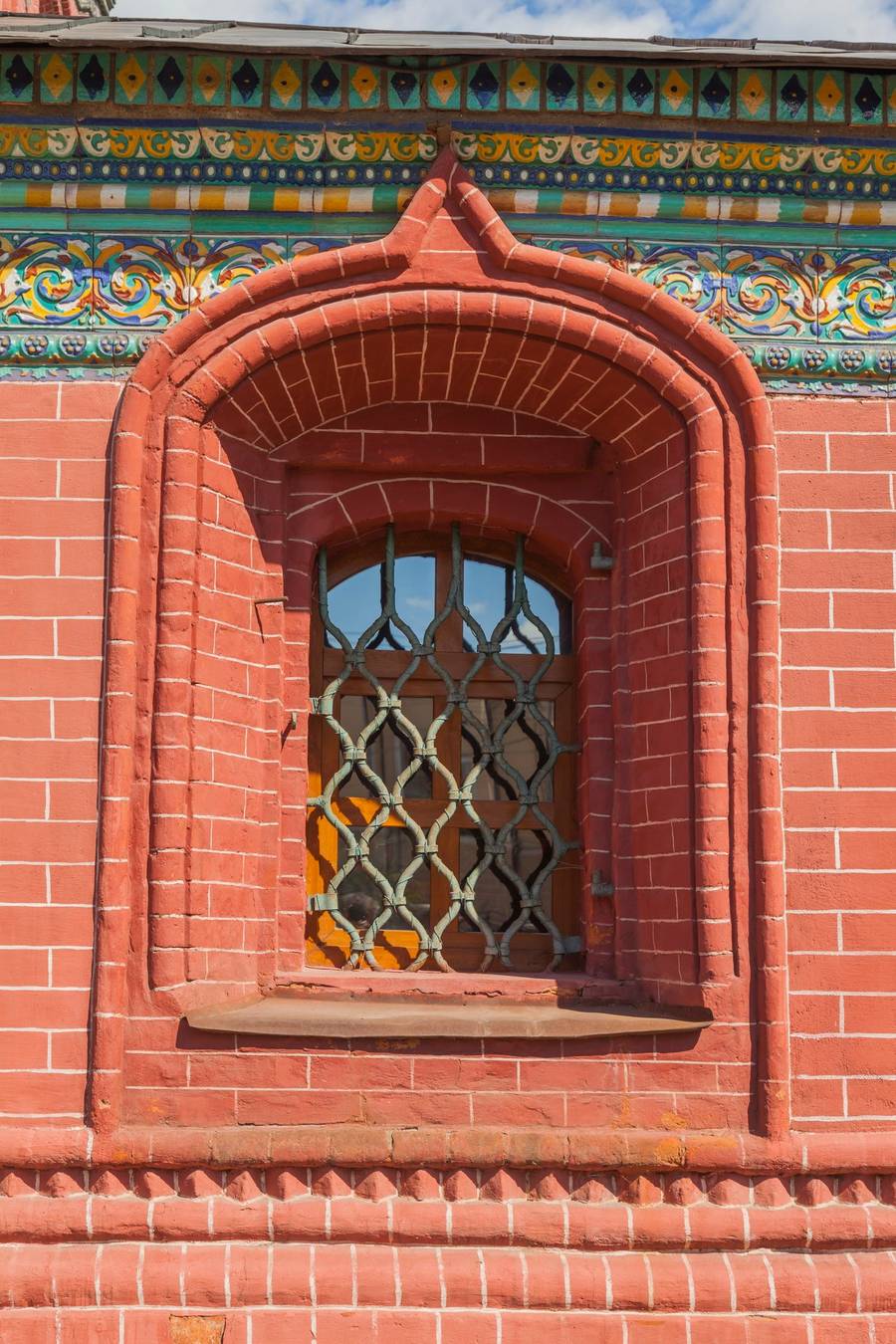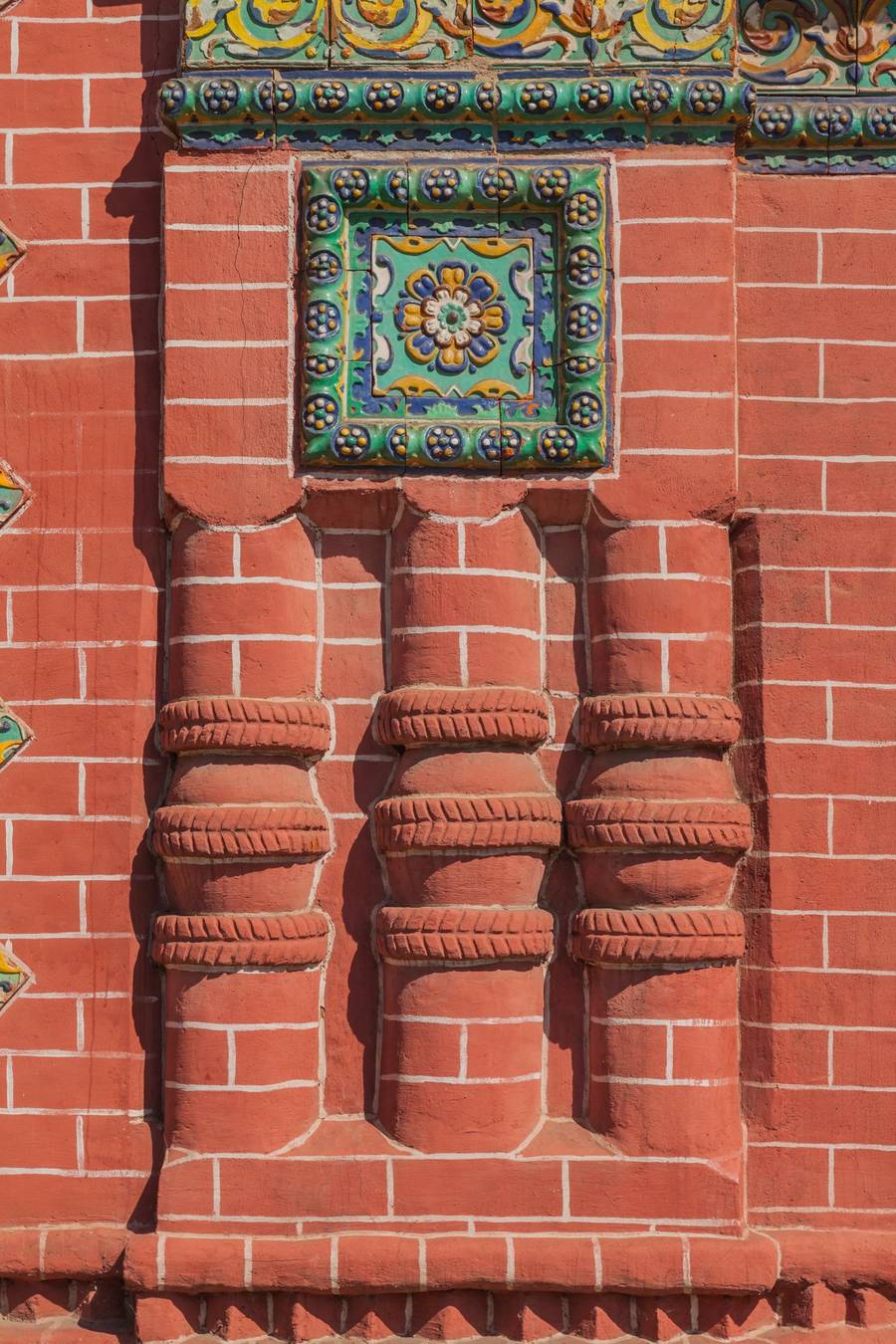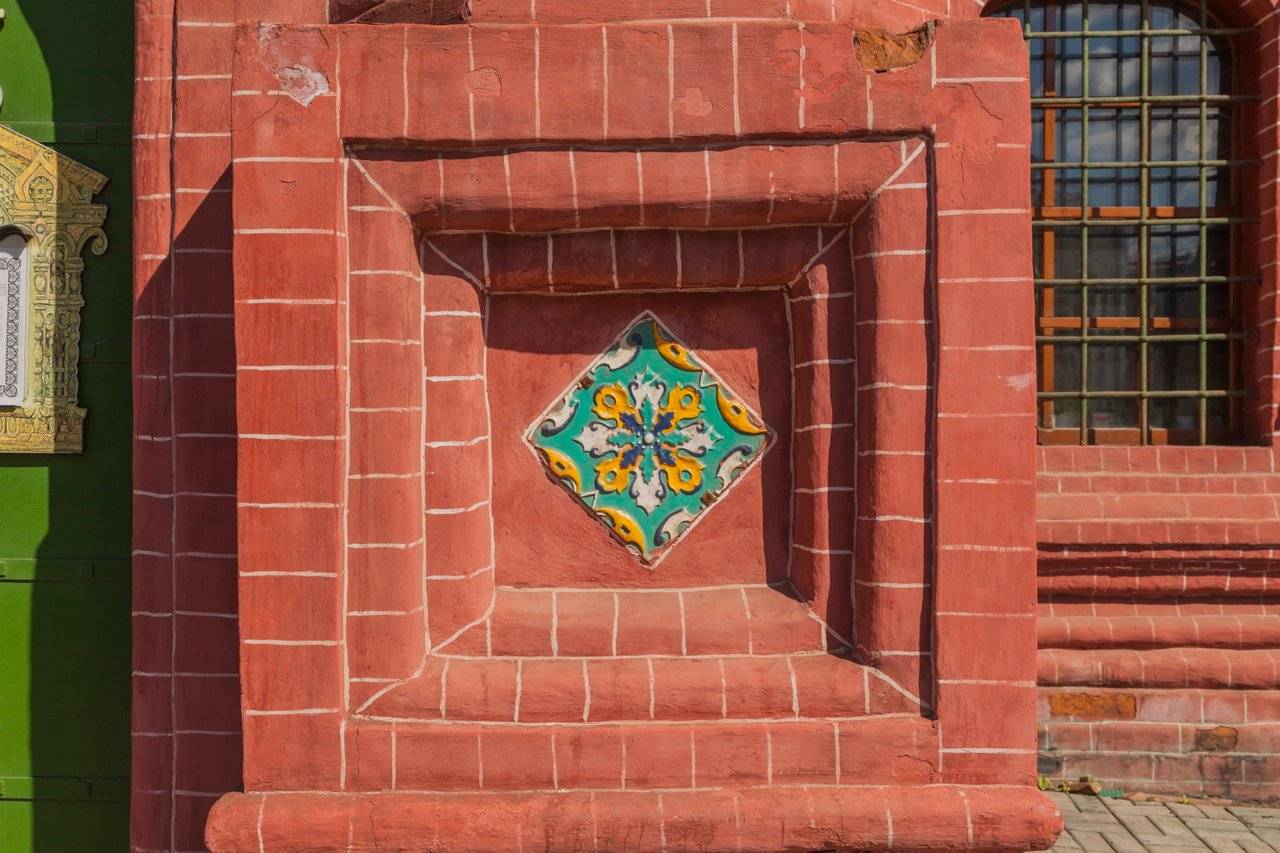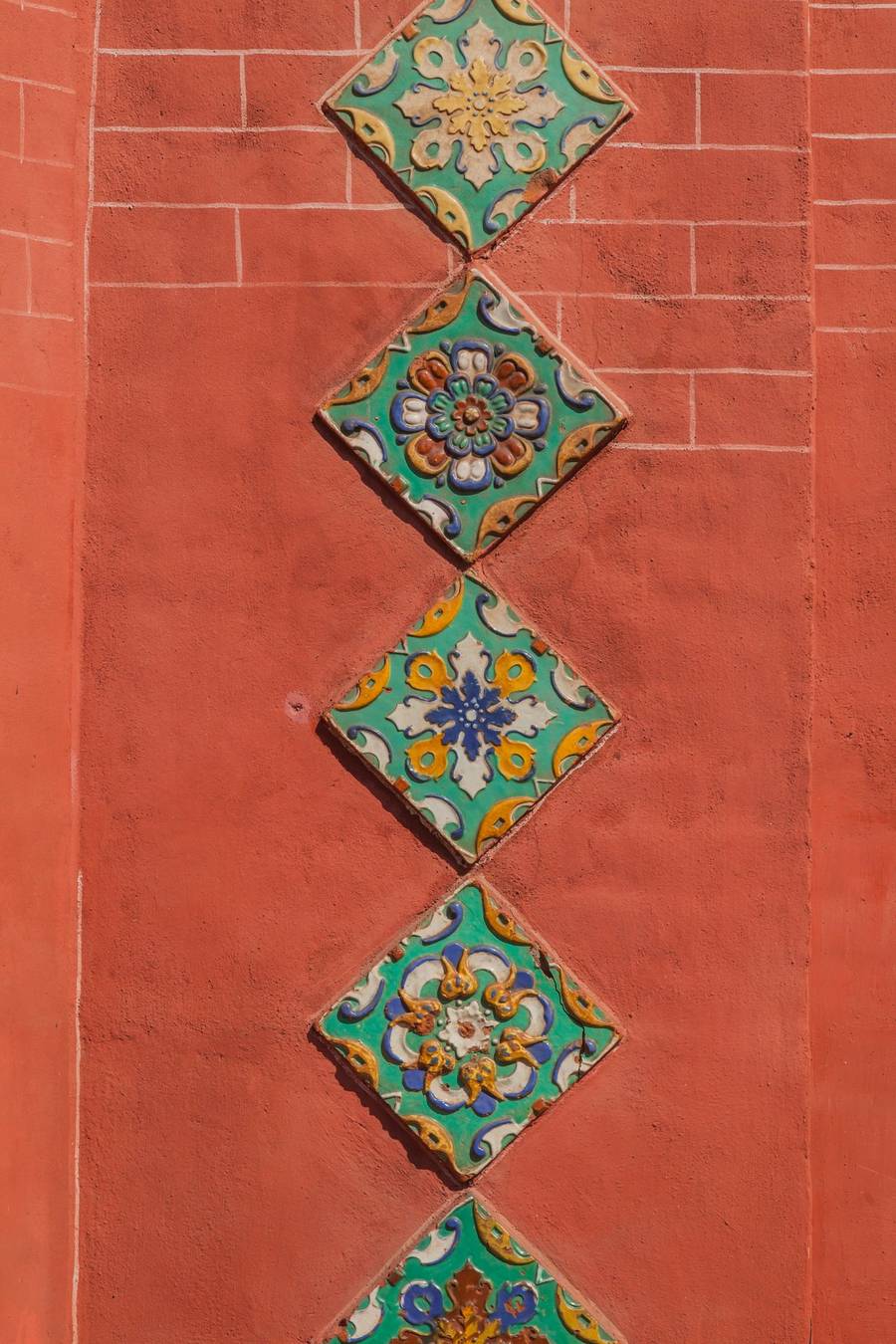Yesterday was the Day of Yaroslavl city
Yaroslavl [jɪrɐˈsɫavlʲ] is a city and the administrative center of Yaroslavl Oblast, Russia, located 250 kilometers northeast of Moscow. The historic part of the city, a World Heritage Site, is located at the confluence of the Volga and the Kotorosl Rivers. It is one of the Golden Ring cities, a group of historic cities northeast of Moscow that have played an important role in Russian history.
Judging by the date of the first mention in the annals, Yaroslavl is the oldest existing city on the Volga river. It was founded by Prince Yaroslav the Wise in the period of his Rostov reign (988-1010) on the cape above Strelka on the site or near the pagan settlement of Bear's Corner. On a naturally protected area on three sides (steep high banks of the Volga and Kotorosli and Medveditsky ravine, along which a stream ran), the Yaroslavl Kremlin was built. The first mention of Yaroslavl - the famine-induced "revolt of the Magi" in Rostov land - dated 1071.
This is info from wikipedia
Yesterday was the day of Yaroslavl city. It was 1008 birthday of the city.
I was glad to visit this city. It's not far from my native Kostroma city. It's about 60 km. So, I decided to make several posts about this wounderful city. Let's start today.
When I arrived in the historical center of Yaroslavl and I was driving over the bridge via Kotorosl river. It was like a door to old Yaroslavl. When I stay and saw in the center I saw Spaso-Yaroslavsky Monastery from the right side of the road.
White walls on my photos.
The Yaroslavl Savior-Transfiguration Monastery (Spaso-Yaroslavsky Monastery) is an ancient male abolished monastery in Yaroslavl, which played an important role in local history. Located on Epiphany Square, near the Moscow bridge across Kotorosl in the Kirov district of the city. On its territory there are monuments of architecture of the XVI-XIX centuries. Here was found "The Lay of Igor's Host" - a monument of ancient Russian literature.
If you can see on the left side of the road you can see red church. It's the Epiphany Church.
The multi-colored glazed tiles are also noteworthy for the decorative decoration of the church. According to their number and method of application, the Epiphany Church is an absolutely unique monument. Two types of tiles are used here. The first is tiles with a repeating pattern, of which wide ribbon-shaped friezes are drawn, as if drawing a silhouette and the main details of the monument. The second type - tiles with a centrally closed pattern, from which vertical strips are made, emphasizing the vertical architectural details. In the 1950s. on the monument were carried out large-scale restoration work, which restored to its original appearance. Including was largely restored and tiled decor.
The Epiphany Church was built in 1684-1693. on the city land. Funds for construction donated Yaroslavl merchant of the living room hundreds of Alexei Zubchaninov. Before, on the place where the temple was located, there were posadsky yards; according to different sources, the first wooden temple of the Epiphany was built here, or in the 16th century, when this territory moved to the Spassky Monastery, or even in pre-Mongolian times. In the XVI century. here settled "monastic people", and the area began to be called the Epiphany Slobodka. The Temple of the Epiphany of the Lord is a wonderful example of the synthesis of two architectural trends - Moscow and Yaroslavl. The main volume of the temple is made in the Moscow style: without a podklet, besstolpny, covered with a closed vault, and its interior is extraordinarily spacious, bright and high. The temple is well lit thanks to the large and tall windows.
Traditions of Yaroslavl architecture were surrounded by the main chetverik galleries on three sides; in the north-western corner of the gallery there is a tented bell tower. The temple is decorated with polychrome tiles. Figures on tile tiles are two types of floral ornament: repeating for cornices, ribbons and other long color compositions, and centric, on tiles, located separately. The interior paintings of the church have been preserved since 1693. It is supposed that the temple was painted by the artel of the masters Dmitrii Plekhanov and Fedor Ignatiev - the best isograms of his time. There is even a suggestion that the famous Gury Nikitin participated in the collection of arches. The colors of the paintings are dominated by gold, red and blue, which makes the temple seem more beautiful and richer in the right light.
The paintings that cover the walls of the temple are plotted and diverse; they depict in detail the evangelical events. Complementing the decoration of the luxurious carved iconostasis in the Baroque style, made in the late XVII century. Most likely, he was ordered to open the temple and has not changed since. Some sources refer him to the work of the carvers of the circle of the famous master Semen Spiridonov Kholmogorets.
According to numerous accounts, three main and especially revered shrines were kept in the temple: the altar cross with the Cross of the Lord, the carved wooden head of John the Baptist in a dish and a huge carved altar cross, a unique pattern of woodcarving. The first two shrines were completely lost.
Info from this place
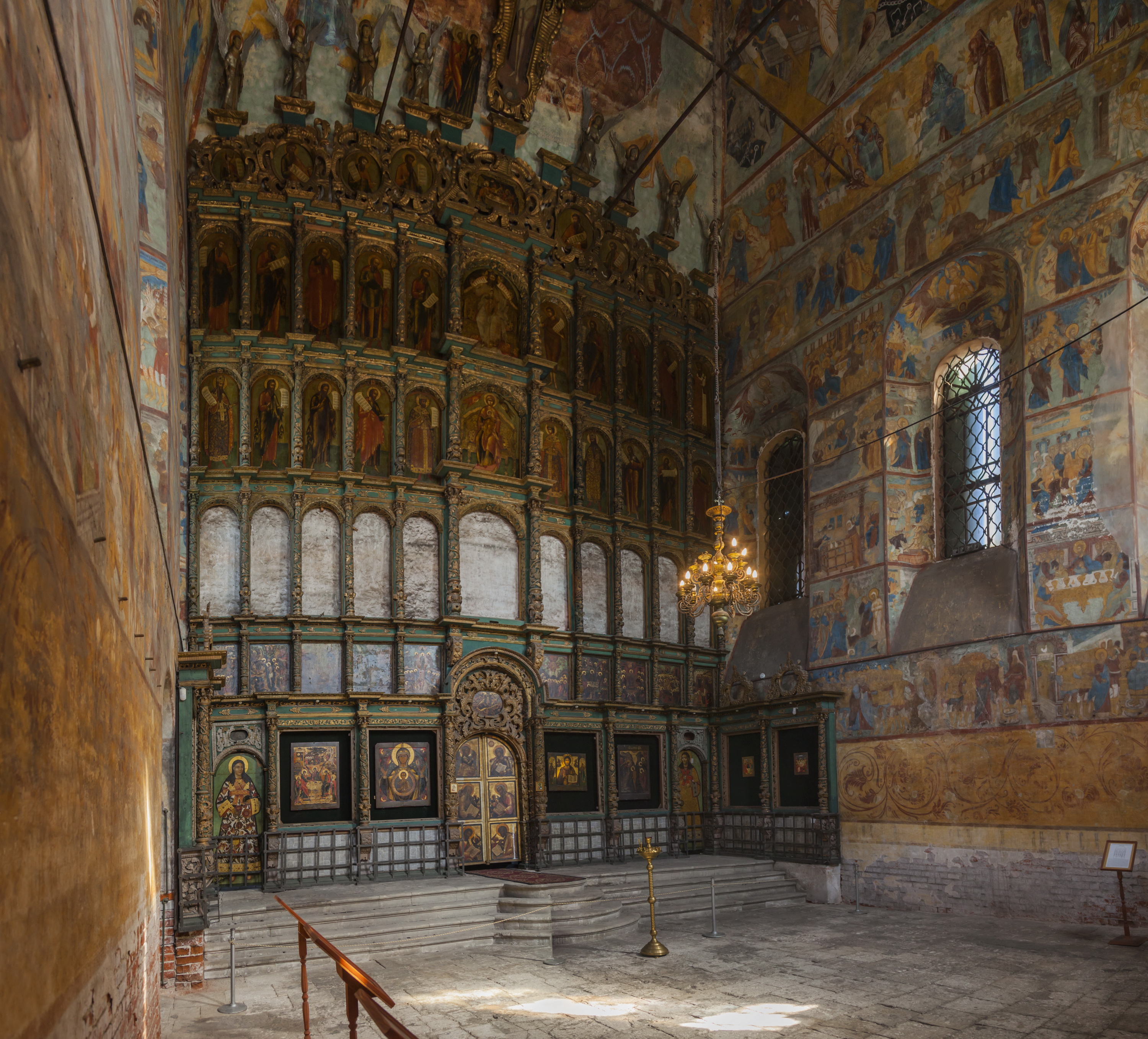
Ready to Blog & Earn?
With TravelFeed, easily start your own travel blog and earn as you go. It's the smart platform for travelers who want to profit from their passion. Create a free account
A little bit history
The history of the church of the Epiphany in the XVIII-XIX centuries is rather modest. Only once a year - on the feast of the Epiphany - the church became the center of church and people's celebrations. Once in a year the church of the Epiphany became the main one in Yaroslavl. It happened on Baptism. Near the temple on the river Kotorosli a hole was made for the consecration of water - the Jordan, and the celebration itself began with the procession from the Spassky Monastery. Then the Liturgy served in the Epiphany Church, and afterwards they went to the Jordan.
The rest of the time the church lived a modest life, no different from the life of other parish churches of Yaroslavl.
The new era, which came in 1917, affected the state of the Epiphany Church almost immediately. In 1918, Yaroslavl experienced one of the most tragic events in its history - the White Guard uprising. The uprising was brutally suppressed, within a few days the city was "covered" with artillery shelling, which caused serious damage to both temples and residential buildings. Epiphany Church lost as a result of shelling of the roof, roof, kokoshniki, the final walls of the four. The shells struck the heads of the church, the south and west walls in several places. The southern chapel burned out completely, together with the iconostasis and all utensils. The temple, therefore, was actually in ruins. But, in spite of everything, the liturgical life continued.
Moreover, in 1922 the Epiphany Church, already in the most miserable position, was also "dekulakized" - in favor of the hungry. The items were valued for their "precious metals" content and weight. Their artistic value was of no interest to anyone. In vain, the museum department of Glavnauka tried to "take into account" and "guard" the works of church art. I managed to save only the "bare" icons, but not their precious attire.
In the community the Epiphany Church was taken away in 1927 with the transfer to the museum.
In 1929 the question arose about the demolition of the Epiphany Church in Yaroslavl. Fortunately, the intention was not realized, and soon the restorers managed to patch the most painful holes on the body of the temple.
In 1935 the Epiphany Church was recognized as a monument protected by the state. Purposeful destruction to her, therefore, no longer threatened. But at the same time, despite the status of the temple, it was built a garage and a car repair shop. Needless to say, this use of the building did not work for him. In particular, the frescoes suffered: directly on them they paved the wiring, part of the murals in the lower tier were simply shot down together with the plaster. In addition, the constant vibration, which "produced" workshops and garage, affected the condition of the walls.
In 1951, after a survey by specialists, the Church of the Epiphany - a unique monument and in extremely difficult condition - was one of the first objects that restorers took up.
Travel Resources for your trip to Russia
Recommended by TravelFeed
Flights: We recommend checking Kiwi.com to find the best and cheapest flights to Russia.
Accomodation: Explore the best places to stay in Russia on Booking.com, Agoda and Hostelworld.
Car Rental: For hassle-free car hiring, DiscoverCars is our trusted choice with a wide selection of vehicles.
Internet: Got an eSIM compatible phone? Airalo is perfect for reliable internet access during your trip. Just install it before you go, and you're set!
Day Trips & Tours: We recommend GetYourGuide for a variety of well-organized and enjoyable activities.
Travel Planner: Need a hand planning? Our free travel planner chatbot is your personal guide to Russia. Chat now.
Disclosure: Posts on TravelFeed may contain affiliate links. See affiliate disclosure.
